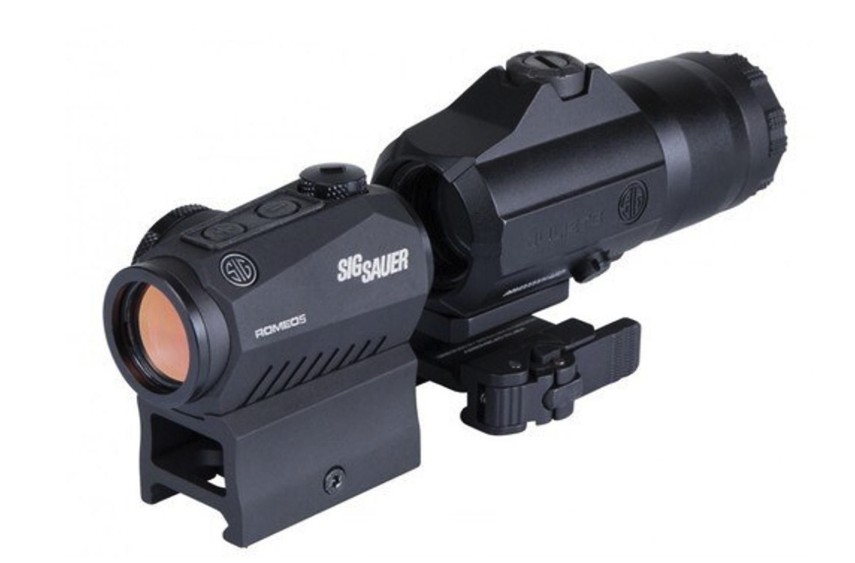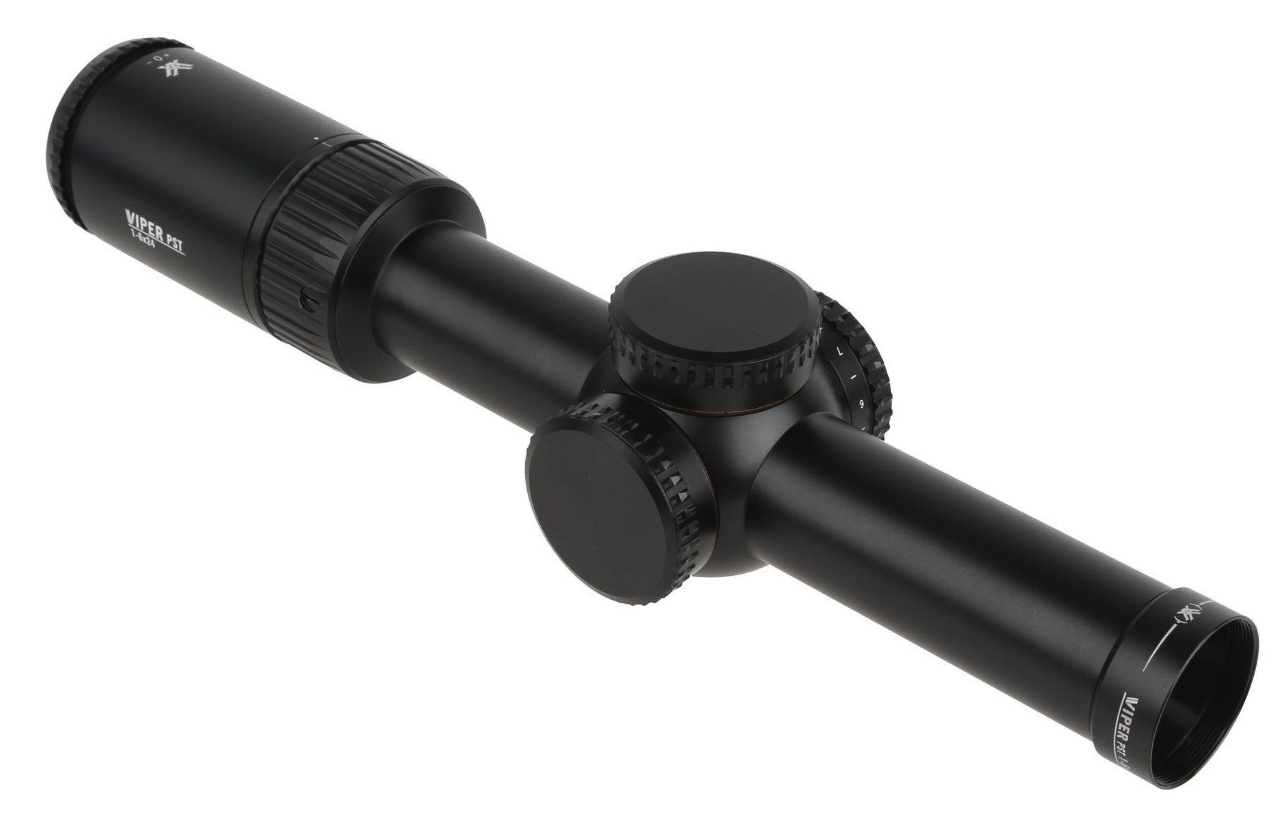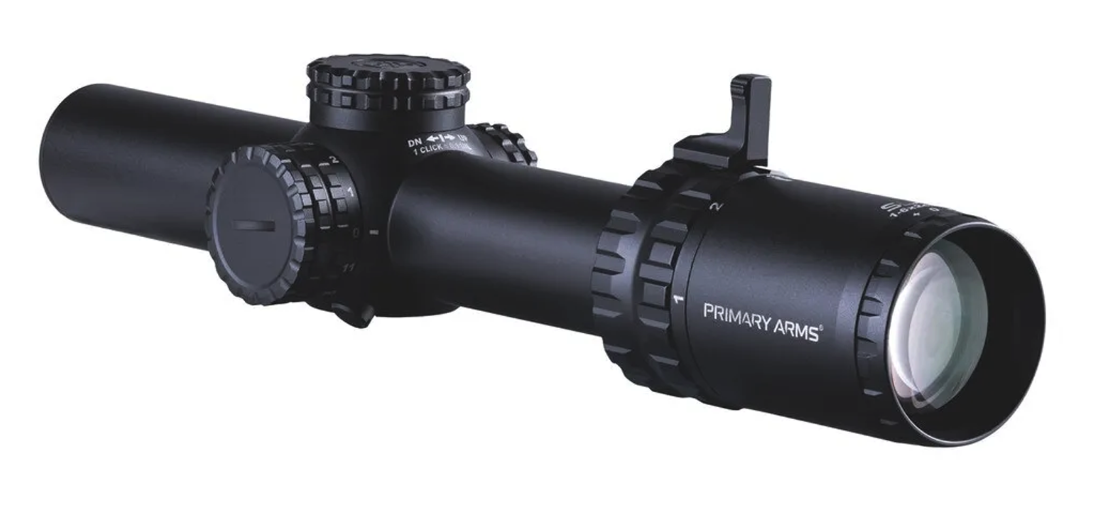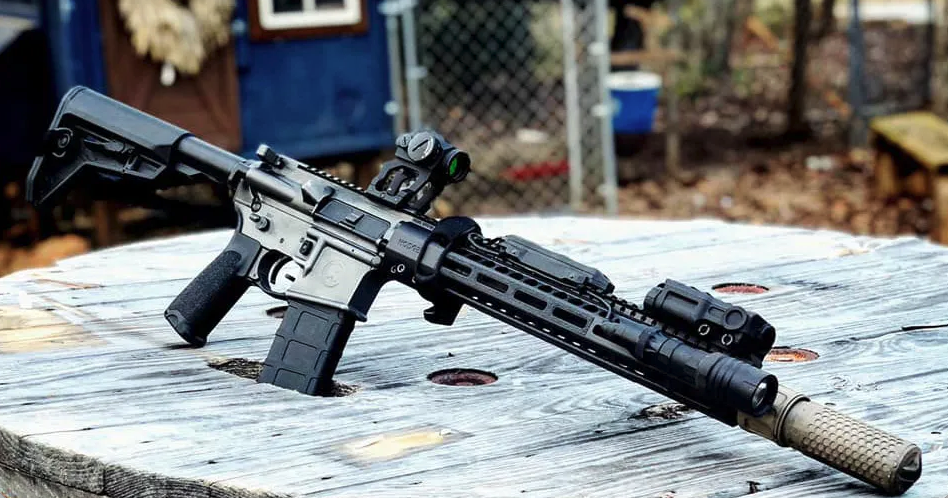AR-15 Accessories, Optics, Vortex
AR-15 Optics: How Much Magnification Makes Sense for a Defensive Carbine
The first thing I do when planning a build is consider the purpose of the rifle and what optic will be mounted on top of it. This is important because choosing the right optic for a defensive AR-15 shapes how the rifle performs when seconds matter. The key decision with AR-15 optics is magnification: a non-magnified red dot for fastest target acquisition, a low-power variable optic (LPVO) for adjustable precision, or a red-dot plus magnifier for a modular middle ground. Rifle caliber, environment (urban, suburban, rural, indoor), and expected engagement ranges should drive your choice. Close quarters usually favor zero magnification; longer sightlines benefit from zoom. The sections below explain strengths, trade-offs, and practical recommendations to help you match optic choice to mission.
Non-Magnified AR-15 Optics: Speed and Clarity in Close Quarters
In 2025, there is a tendency to think that an LPVO is the go-to answer for every rifle, but the fact is that for many, the red dot is a more affordable and practical option. Red-dot sights are the go-to for fast, close engagements. They project a single illuminated aimpoint on a lens, letting you shoot with both eyes open for rapid target acquisition and superior situational awareness. In homes or apartments—where most defensive encounters happen at very short distances—this simplicity is a major advantage.
Weighing around 8 to 10 ounces for many compact models, red dots keep the rifle light and maneuverable for tight spaces or prolonged carry. High-quality units are rugged, resist recoil, water, and dust, and often have extremely long battery life, with some models running for years of continuous use.
Red dot AR-15 optics excel in dynamic scenarios—shooting from odd angles, moving through doorways, or engaging while under stress—thanks to unlimited eye relief and a wide field of view. Their limitation shows at longer distances: a 2–4 MOA dot can obscure small targets beyond about 100 yards, making precise long-range shots harder without practiced holdovers. Budget red dots can have reliability or brightness issues, so proven brands and good mounts matter.
Red Dot + Magnifier: A Modular Middle Ground for AR-15 Optics
The obvious downside of selecting a red dot is the lack of magnification, but due to the rise of the flip-to-the-side magnifier, the red dot has become a very viable solution at distances well past 100 yards. A flip-to-side magnifier (commonly 3x) behind a red dot gives a flexible two-mode setup: both-eyes-open speed for close work, and quick magnified identification and aiming for mid-range shots. A quality 3x magnifier regularly extends usable range into the 150–200 yard band for many shooters, though exact effectiveness depends on glass quality and skill.

The advantage is modularity and relatively low added weight, usually 6–12 ounces, keeping the rifle lighter than an LPVO. When flipped aside, the setup handles just like a red dot. When engaged, it provides magnification for more precision or target ID.
Trade-offs include a narrower field of view, tighter eye relief when magnified, and the need for precise alignment to avoid zero shift. Even when flipped aside, the magnifier can add bulk or catch on gear in very tight quarters. Still, for shooters who are primarily close-in but occasionally need magnification, the red-dot-plus-magnifier remains a practical and cost-effective solution.
Magnified Optics (LPVOs): Precision for Extended Ranges
When engagement distances extend beyond close quarters—open rural property, long driveways, or large suburban lots—an LPVO provides built-in zoom, typically from 1x to 4x, 6x, or even 10x. At 1x, many LPVOs perform like a red dot, while at higher power they allow scope-level precision.
The big advantage is improved target identification at distance, which can be tactically and legally critical. Modern LPVOs with bright, daylight-visible reticles and wide fields of view are fast up close and effective for long-range accuracy.

Drawbacks include weight, often 18–24 ounces, which affects balance and speed. Higher magnification requires a consistent cheek weld and eye position. Quality LPVOs also cost more than red dots or magnifier combos.
For a 5.56 NATO carbine with a 16-inch barrel, accurate shots out to several hundred yards are possible with the right ammunition and training. Shorter barrels reduce effective range, while longer ones preserve velocity for distance.
Key Factors When Choosing Magnification
Caliber and ballistics: 5.56 NATO pairs well with red dots, magnifiers, or LPVOs. Heavier rounds like .308 benefit from magnified optics to fully use their trajectory and energy.
Environment: urban and indoor defense favors red dots or magnifier combos; suburban areas with 100–200 yard sightlines lean toward magnifiers or 1–4x/1–6x LPVOs; rural open ground makes 1–8x or higher more practical.
Engagement distance: most civilian defensive incidents happen at short ranges, so close-quarters capability matters most. Plan for occasional longer-range needs with magnification if your environment requires it.
Barrel length: shorter barrels reduce velocity and effective distance; longer barrels extend it. Choose optics in line with the ballistic performance of your rifle.
Reticle and mount height: FFP reticles scale holdovers with magnification; simple dot reticles excel on red dots and magnifiers. Mount height should match your shooting style and body position.
Low light: a weapon-mounted light is essential—no optic replaces positive identification.

Hybrid Solutions: Covering All Bases
Some shooters pair an LPVO with an offset 45° red dot. The LPVO handles mid-range and long-range shots, while the offset dot provides instant readiness for close threats. Zero the offset at 50 yards, secure the mount, and practice transitions. This hybrid solution works best for environments where you expect both close-quarters and extended-range needs.
Final Thoughts: Match Magnification to Mission
There are no single “best” AR-15 optics for every defensive carbine. For close-range defense, a quality red dot offers unmatched speed and simplicity. For occasional mid-range work, a red-dot plus magnifier bridges the gap without major weight or cost. For versatile use across close, medium, and long distances, an LPVO delivers the broadest capability—though at higher weight and expense.
Whatever AR-15 optics you choose, pair it with a reliable mount, quality ammunition, and a weapon light. Train at realistic distances for your environment. A carbine is only as effective as the shooter behind it, and the best optic is the one that matches your mission and skill, giving you confidence when it matters most.


